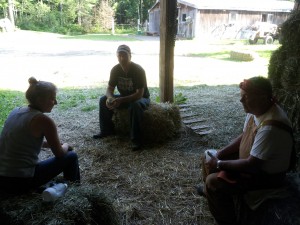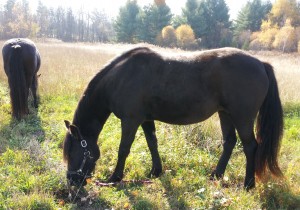| Coming clean on the risks of using antibacterial productsPosted: 26 Jul 2011 09:00 AM PDT
When was the last time you cleaned your hands, washed some dishes or used a wipe with the term “antibacterial” in its name? With the public’s growing fear of germs and increased desire for fierce sanitation, the number of new antibacterial products has exploded to the point where most people use these kinds of products, and the chemical triclosan, on a daily basis.
Interestingly enough, you might not realize how often you are exposed to triclosan. Products containing the chemical can be found in many consumer products, from cosmetics such as soap and deodorant to dish soap, facial tissues, bed linens and toys. This hit home personally a few months ago when I discovered I had been using toothpaste containing triclosan.
Rachel Brown and Katie van der Sloot are two high school students in Medicine Hat, Alberta, who noticed a flood of these products in their community after the H1N1 pandemic in 2009. They wondered whether our massive defense against germs is actually riskier than the germs themselves. So they launched an ambitious science fair project to find out.
First, they found triclosan-resistant bacteria in their local water. And they’re not alone; Environment Canada has also found triclosan in the Saint Lawrence River. What does the presence of triclosan in our ecosystems mean? I was surprised to learn that it can poison aquatic life, persist in the surrounding environment, and bioaccumulate in animals. As a result, the David Suzuki Foundation placed triclosan on its Dirty Dozen list of chemicals to avoid in cosmetics.
In addition to the environmental effects of triclosan, the chemical can also promote antibiotic resistance. Rachel and Katie found evidence of this when the environmental and human bacterial samples they collected for their experiments showed signs of cross-resistance with triclosan. The antibacterial is also a suspected endocrine disruptor and may form carcinogenic substances, such as chloroform, when mixed with chlorine (this could happen when any product containing triclosan gets used with chlorinated tap water, such as when brushing teeth or washing dishes). As we increase the number of antibacterial products we use, our exposure and the risks to our health grow — triclosan has been found in human blood, urine, and breast milk.
While you can look for triclosan in the fine print of personal care product ingredient lists, manufacturers are not required to disclose ingredients in other types of products. Until this changes, the best thing you can do to avoid triclosan products (PDF) is avoid products that make antibacterial claims. Check out and sign the Campaign for Safe Cosmetics Pledge to go Triclosan-Free.
Since conducting their research, Rachel and Katie have become advocates against the use of triclosan by posting a video on YouTube. In an e-mail to the David Suzuki Foundation they state: “We believe these findings should be broadcast internationally for the health and protection of our society.” The pair is well on its way to doing just that. They earned a place at the National Science Fair and took home a bronze medal. They also won the UNESCO Peace and Development award and are on team Canada in an international competition in Slovakia this week. “We highly encourage all members of society to stop their use of antibacterial products altogether and turn back to good old soap and water for cleanliness.”
The Canadian Medical Association agrees; it passed a resolution (Resolution 74) to call on a federal ban on the sale of antimicrobials in consumer products, citing the effectiveness and adequacy of using plain soap in households to prevent infection. The chemical is on the Government of Canada’s radar as a part of the Chemicals Management Plan. The David Suzuki Foundation will be supporting a ban on this chemical.
From the David Suzuki Foundation |


